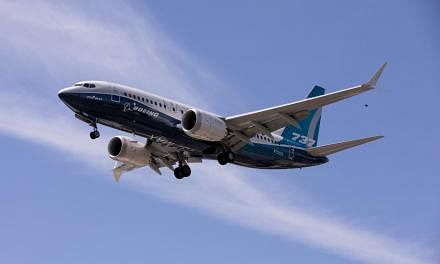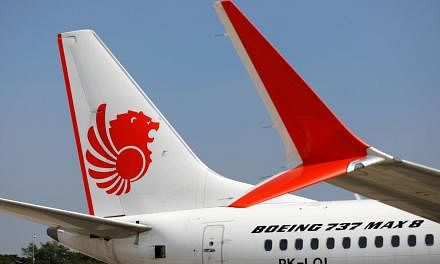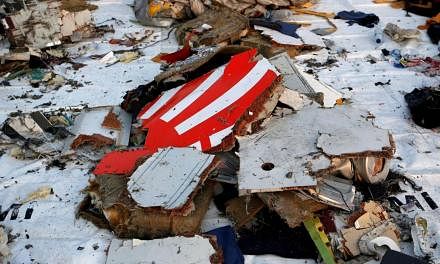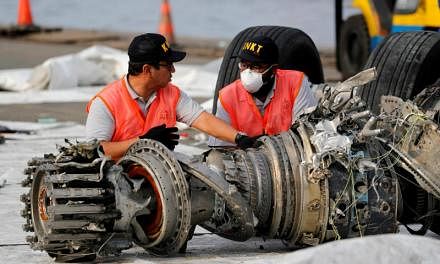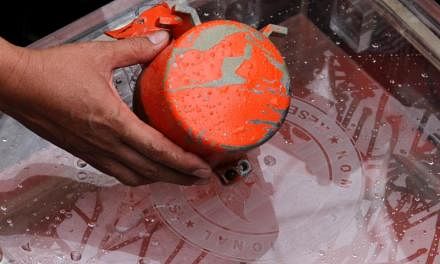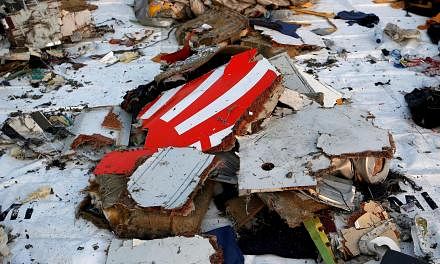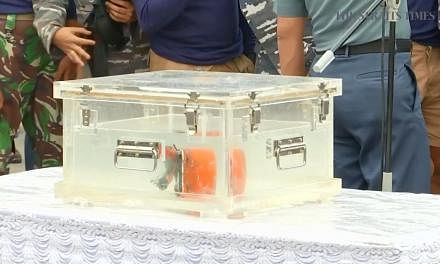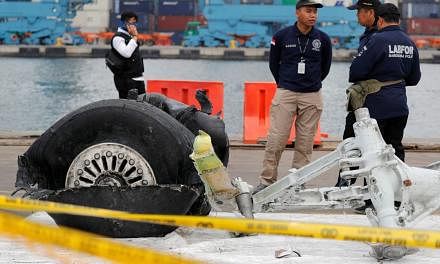JAKARTA (THE JAKARTA POST/ASIA NEWS NETWORK) - Amid the controversy surrounding the airworthiness of Lion Air flight JT610, aviation experts said on Friday (Nov 30) that the investigation into the plane crash should centre on the flight control that was found to be flawed.
Aviation analyst Alvin Lie said he thought Boeing assumed that the Boeing 737 Max 8, the flagship aircraft of the United States-based manufacturer, had the same features of older models.
"The Max series has new features and different characteristics compared to (the previous model) and this explanation is not included in the pilot training manual, so pilots are not aware of these new features or how to respond when problems arise," Lie said on Friday.
He said he wondered whether the maintenance manual for the 737 Max, the latest version of Boeing's best-selling plane that is equipped with anti-stall control technology, included the inspection and repair procedures of the Manoeuvering Characteristics Augmentation System, which is new to the series.
"Because Boeing didn't include the feature on the automatic anti-stall technology in the pilot training manual, we could assume that it was also not included in the aircraft maintenance manual. And if Boeing doesn't provide it in the manual, how could the Lion Air technician understand what to do?" he added.
The crash of flight JT610 that departed from Jakarta en route to Pangkalpinang, which killed 189 people on board, has triggered a debate in the aviation industry.
Boeing issued bulletins containing two updates for operators around the world to enhance security following the Lion Air accident.
Lion Air, the country's largest airliner, is not without flaws as it is notorious for flight delays and other aspects of poor service despite its large network.
The National Transportation Safety Committee (KNKT), which is investigating the crash, issued a preliminary report on the investigation, revealing that the aircraft had malfunctioned during the flight from Denpasar to Jakarta the night before the incident.
The flight data recorder showed that the plane's stick shaker, a device that warns the pilot of an imminent stall, was active prior to and during the flight from Denpasar.
The pilot of the Denpasar flight noted several other warning signs that appeared on the flight display, including one concerning a difference in airspeed.
The very same problem occurred right before the aircraft took off for Pangkalpinang and remained active until the crash.
The findings sparked a debate on the plane's airworthiness, despite the KNKT confirming that the malfunctions noted during the Denpasar flight had been corrected before the plane was declared airworthy and departed for Pangkalpinang.
Aviation analyst Gerry Soejatman of CommunicAvia said an airworthiness inspection was aimed at ensuring that an aircraft can be dispatched and the limit for dispatch is when the aircraft takes off.
Once an aircraft takes off, Soejatman said, it can have malfunctions, some of which can render the aircraft unairworthy.
"If the aircraft is released on the ground and encounters problems in the air, the pilot must, first and foremost, fly the aircraft and keep it under control," he added.
Soejatman said there was nothing to be worried about regarding Indonesia's airworthiness systems and standards as it had scored 90.91 per cent at the International Civil Aviation Organisation, above the global average of 78.23 per cent.
"If there is anything wrong with the (airworthiness) system, it will be reflected in the audit and the frequency of accidents will increase," he said.
Responding to the KNKT report, Boeing has highlighted different responses from the pilots of the last two flights of the aircraft.
In its press statement, the company said the flight crew of the Oct 28 flight from Denpasar to Jakarta turned off the aircraft's automatic features when it experienced an automated nose-down trim and continued with manual control until the end of the flight.
"The pilot carried out three non-normal checklist procedures, including the runaway stabilizer non-normal checklist, which is a memory item prescribed by the 737 MAX Flight Crew Operations Manual, and reaffirmed in the Boeing Flight Crew Operations Manual Bulletin TBC-19 and FAA Emergency Airworthiness Directive Number 2018-23-51, as the appropriate procedure to address unintended horizontal stabiliser movement, regardless of the source," the statement said.
"Unlike as is stated with respect to the prior flight, the report does not state whether the pilots (of the Jakarta-Pangkalpinang flight) performed the runaway stabiliser procedure or cut out the stabiliser trim switches," the company said.
Correction note: The Jakarta Post has clarified that the sentence, "Boeing, one of the world's largest airplane manufacturers, had acknowledged the defect in the pilot training manual and issued a revision," is incorrect. This article has been updated.

